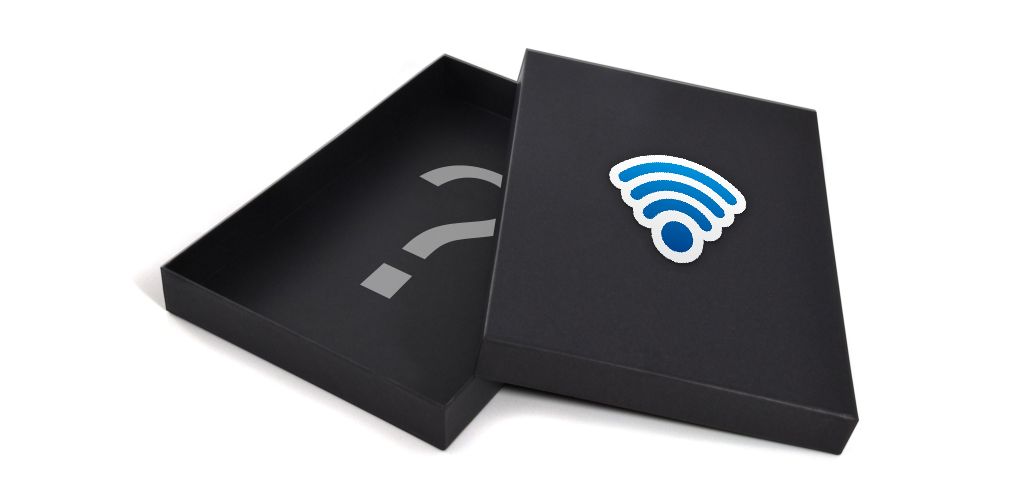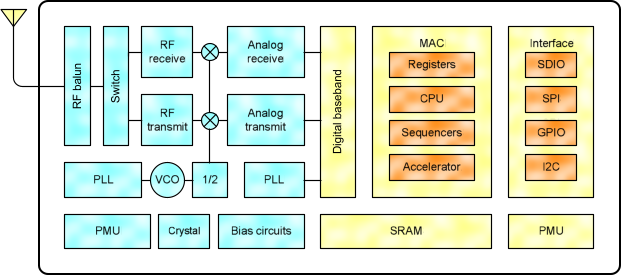ESP8266: What's inside the “popular wi-fi”?

Our first article about the Wi-Fi-chip ESP8266 was warmly received by the habr-community. Despite the fact that it contained little specific information. There was a good reason for this - the NDA, which we signed to receive the SDK from the manufacturer of the solution, Espressif . That is why we just said, "there is such a solution." So that interested have the opportunity to pay attention.
The other day, we (the COOLRF project, do not forget to subscribe to our Vkontakte community , if you are not yet in it) received permission from the chip manufacturer to publish information in our articles that previously fell under the terms of the non-disclosure agreement. All who were interested in the details - welcome under cat.
Typical use cases
ESP8266 is designed for use in smart sockets, mesh networks, IP cameras, wireless sensors, wearable electronics and so on. In short, ESP8266 was born to become the brain of the coming “Internet of things”.
')
There are two options for using the chip: 1) as a UART-WIFI bridge, when the ESP8266-based module connects to an existing solution based on any other microcontroller and is controlled by AT commands, providing connection of the solution to the Wi-Fi infrastructure; 2) implementing a new solution that uses the ESP8266 chip itself as a control microcontroller.
The first scenario was briefly described in our last article. It is implemented using any of the inexpensive Chinese ESP8266 modules. Well suited to lovers of Arduino and those who already have in their hands a ready-made schematics and debugged firmware based on something of their own, beloved.
The second variant of the scenario involves writing an individual firmware for controlling the chip “from the inside”. At the moment, the firmware should be written for the proprietary compiler. What, in general, are the requirements for non-disclosure of information around this decision. In the foreseeable future, the manufacturer plans to switch to using GCC and these restrictions will be lifted.
The scenario of using the chip as a control microcontroller is interesting because it allows you to create devices that are really small and really long in battery life. To work with peripherals on board the ESP8266 have all the necessary features.
Key features
The ESP8266 chip is one of the most highly integrated WiFi solutions. Inside the chip there is a heap of everything that in competing solutions is often part of the outer strapping:

As a result, the typical strapping of the chip consists of only a few elements. Less elements = less cost of components, less cost of soldering, less area of placement, less cost of PCB. What is perfectly confirmed by the current prices of modules based on the hero of our today's review.
Manages all these integrated farms enhanced version of the 32-bit processor Tensilica's L106 Diamond series. What is interesting inside?
- 802.11 b / g / n protocol
- Wi-Fi Direct (P2P), soft-AP
- Integrated TCP / IP protocol stack
- Integrated TR switch, balun, LNA, power amplifier and matching network
- Integrated PLL, regulators, and power management units
- + 20.5dBm output power in 802.11b mode
- Supports antenna diversity
- Power down leakage current of <10uA
- SDIO 2.0, SPI, UART
- STBC, 1x1 MIMO, 2x1 MIMO
- A-MPDU & A-MSDU aggregation & 0.4μs guard interval
- Wake up and transmit packets in <22ms
- Standby power consumption of <1.0mW (DTIM3)
Ultra Low Power Technology
Energy consumption is one of the most important characteristics of a solution that claims to be the brain of billions of IoT devices. What is the reason for the popularity of BLE and various own implementations of radio interfaces? After all, in the end, all devices based on these implementations still tend to get into regular Wi-Fi with the help of special devices-bridges.
The secret is simple - it is difficult to create a device connected to WiFi for a sufficient time running on autonomous power. Consumers are not ready to change batteries in sensors every two to three months. Therefore, the "access to the network" had to provide bridges connected to the permanent electricity. ESP8266 should fix this problem. Now Wi-Fi can be used even in stand-alone sensors that run on small batteries. Through the use of advanced power management solutions.
If you look briefly at the characteristics of the consumption of the chip, you can remain in the dark. 215mA in transfer mode - nothing special? Yes, but it's worth reading the datasheet and you begin to understand the prospects for the solution. ESP8266 consumes about 60uA in deep sleep mode (with real-time clock running) and less than 1.0mA (DTIM = 3) or less than 0.5mA (DTIM = 10) in communication with a Wi-Fi access point.
What's next?
Today we have placed in our group VKontakte the original datasheet of the latest version. It contains the complete characteristics of the solution and examples of schematic solutions. See the “Documents” section (right, bottom). Soon there will appear documents with descriptions of the AT-protocol of the UART-WIFI bridge and the proprietary chip programming API. Follow our activities, the future promises to be interesting.
Source: https://habr.com/ru/post/238443/
All Articles